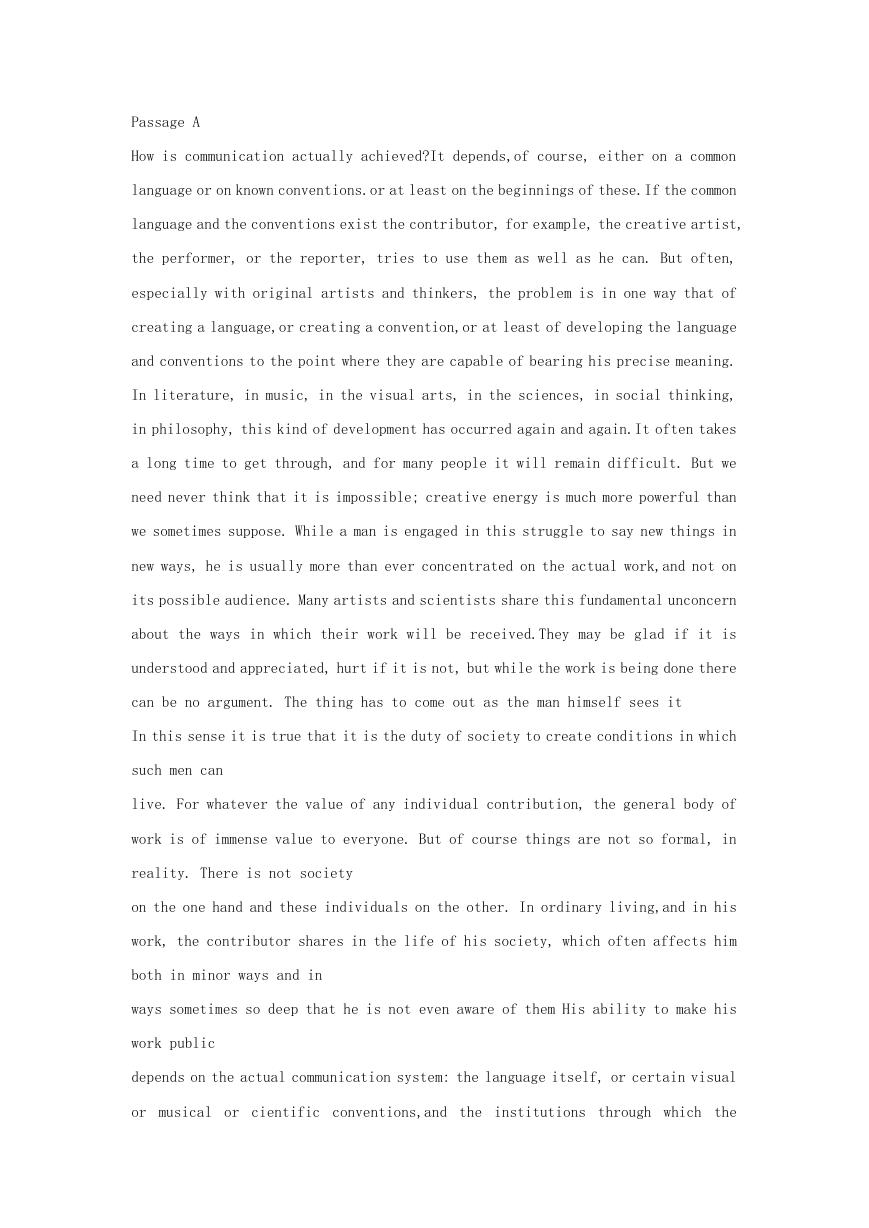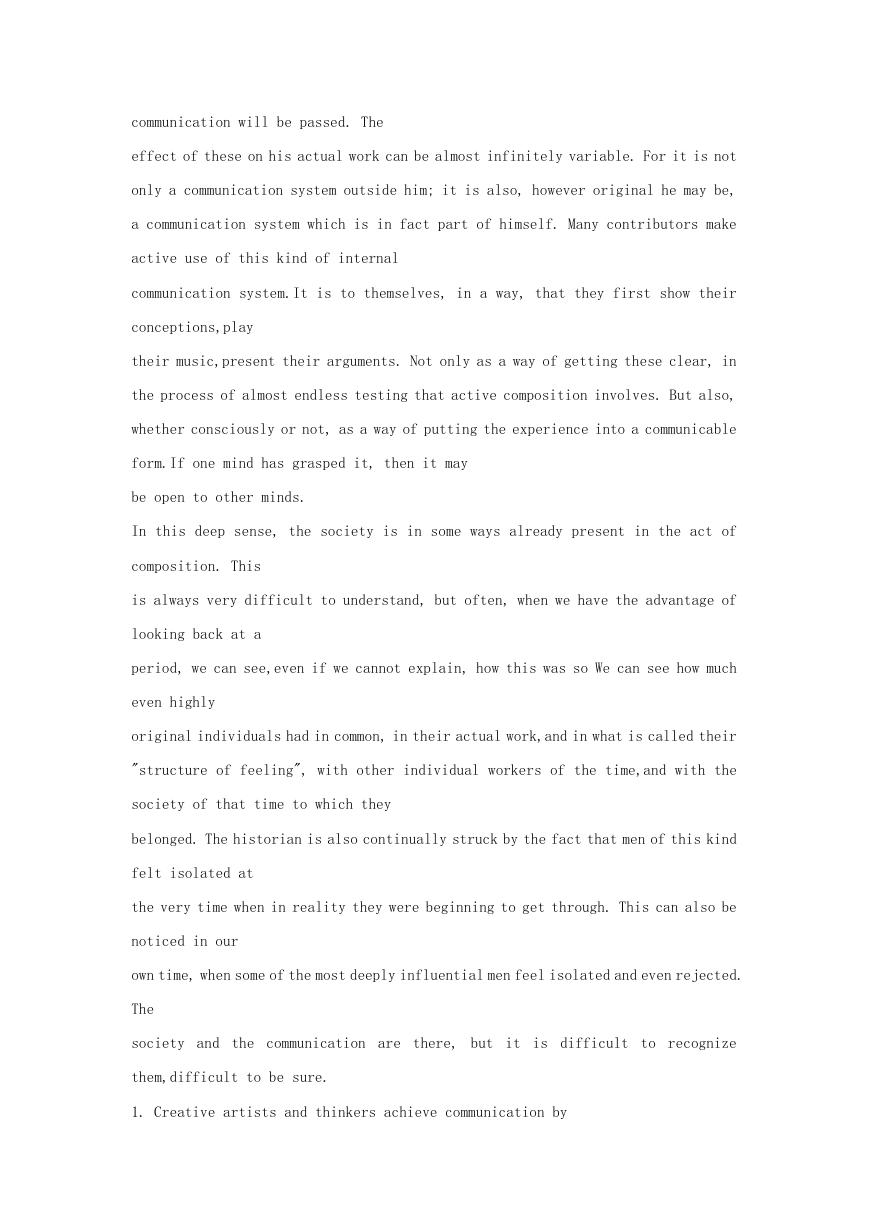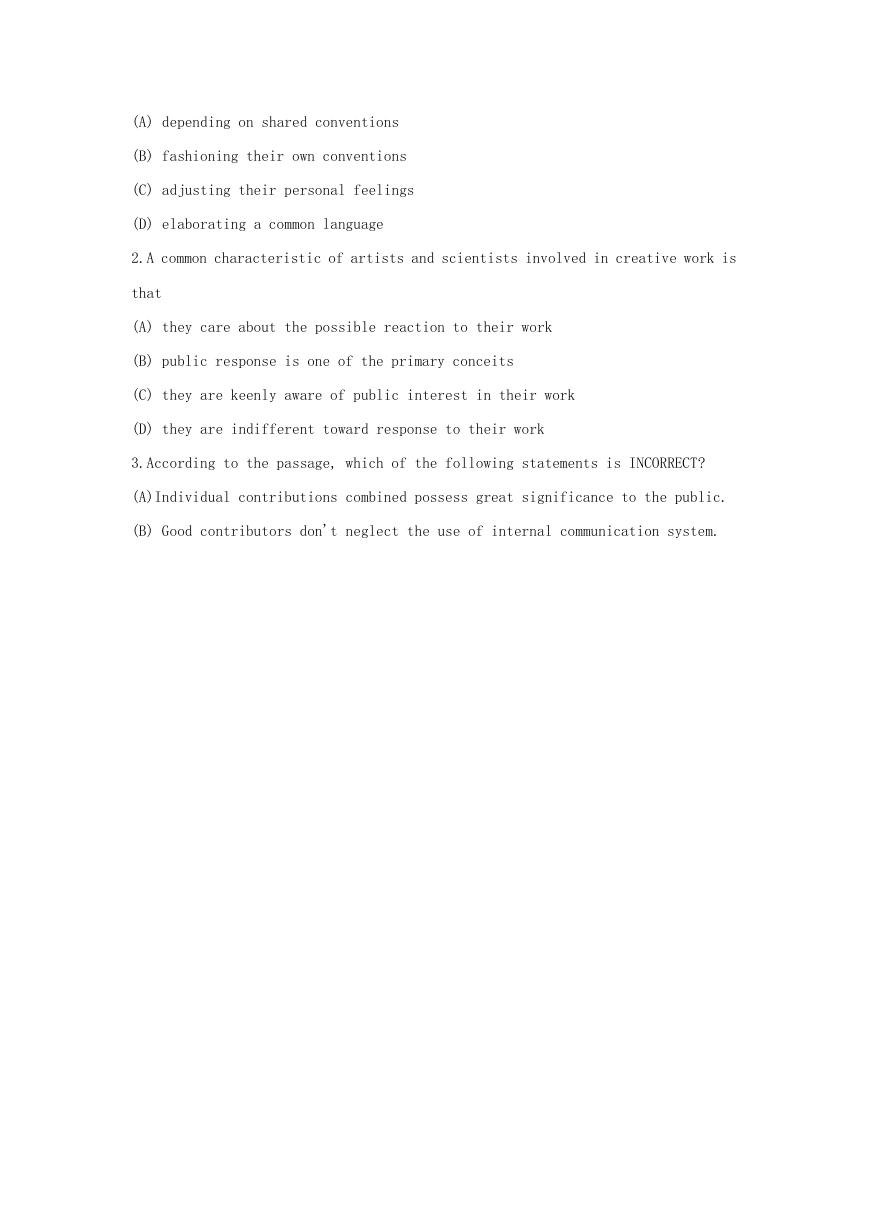2005 年上海理工大学基础英语考研真题
I. Sentence Correction (10%)
Instructions:Rewrite the following sentences without changing the intended meaning:
1.It is essential that the temperature is not elevated to a point where the substance
formed may
become unstable and decompose into its constituent elements.
____________________________________________________________________________
2. When he was a ittle boy, Mark Twain would walk along the piers, watch the river
boats,
swimming and fish in the Mississippi,much as his famous character, Tom Sawyer.
____________________________________________________________________________
3. There are twenty species of wild roses in North America, all of them have prickly
stems,
pinnate leaves, and large flowers which usually smell weetly.
____________________________________________________________________________
4. The final member of the Bach family, Dr. Otto Bach died in 1893,taking with he
the music
genius had entertained Germany for two centuries.
____________________________________________________________________________
5.Living in New York,apartments cost more to rent than they do in other,smaller
cities.
____________________________________________________________________________
II. Reading Comprehension (16%)
Instructions: Read the following passages and tick the most appropriate choices
�
Passage A
How is communication actually achieved?It depends,of course, either on a common
language or on known conventions.or at least on the beginnings of these.If the common
language and the conventions exist the contributor, for example, the creative artist,
the performer, or the reporter, tries to use them as well as he can. But often,
especially with original artists and thinkers, the problem is in one way that of
creating a language,or creating a convention,or at least of developing the language
and conventions to the point where they are capable of bearing his precise meaning.
In literature, in music, in the visual arts, in the sciences, in social thinking,
in philosophy, this kind of development has occurred again and again.It often takes
a long time to get through, and for many people it will remain difficult. But we
need never think that it is impossible; creative energy is much more powerful than
we sometimes suppose. While a man is engaged in this struggle to say new things in
new ways, he is usually more than ever concentrated on the actual work,and not on
its possible audience. Many artists and scientists share this fundamental unconcern
about the ways in which their work will be received.They may be glad if it is
understood and appreciated, hurt if it is not, but while the work is being done there
can be no argument. The thing has to come out as the man himself sees it
In this sense it is true that it is the duty of society to create conditions in which
such men can
live. For whatever the value of any individual contribution, the general body of
work is of immense value to everyone. But of course things are not so formal, in
reality. There is not society
on the one hand and these individuals on the other. In ordinary living,and in his
work, the contributor shares in the life of his society, which often affects him
both in minor ways and in
ways sometimes so deep that he is not even aware of them His ability to make his
work public
depends on the actual communication system: the language itself, or certain visual
or musical or cientific conventions,and the institutions through which the
�
communication will be passed. The
effect of these on his actual work can be almost infinitely variable. For it is not
only a communication system outside him; it is also, however original he may be,
a communication system which is in fact part of himself. Many contributors make
active use of this kind of internal
communication system.It is to themselves, in a way, that they first show their
conceptions,play
their music,present their arguments. Not only as a way of getting these clear, in
the process of almost endless testing that active composition involves. But also,
whether consciously or not, as a way of putting the experience into a communicable
form.If one mind has grasped it, then it may
be open to other minds.
In this deep sense, the society is in some ways already present in the act of
composition. This
is always very difficult to understand, but often, when we have the advantage of
looking back at a
period, we can see,even if we cannot explain, how this was so We can see how much
even highly
original individuals had in common, in their actual work,and in what is called their
"structure of feeling", with other individual workers of the time,and with the
society of that time to which they
belonged. The historian is also continually struck by the fact that men of this kind
felt isolated at
the very time when in reality they were beginning to get through. This can also be
noticed in our
own time, when some of the most deeply influential men feel isolated and even rejected.
The
society and the communication are there, but it is difficult to recognize
them,difficult to be sure.
1. Creative artists and thinkers achieve communication by
�
(A) depending on shared conventions
(B) fashioning their own conventions
(C) adjusting their personal feelings
(D) elaborating a common language
2.A common characteristic of artists and scientists involved in creative work is
that
(A) they care about the possible reaction to their work
(B) public response is one of the primary conceits
(C) they are keenly aware of public interest in their work
(D) they are indifferent toward response to their work
3.According to the passage, which of the following statements is INCORRECT?
(A)Individual contributions combined possess great significance to the public.
(B) Good contributors don't neglect the use of internal communication system.
�








 2023年江西萍乡中考道德与法治真题及答案.doc
2023年江西萍乡中考道德与法治真题及答案.doc 2012年重庆南川中考生物真题及答案.doc
2012年重庆南川中考生物真题及答案.doc 2013年江西师范大学地理学综合及文艺理论基础考研真题.doc
2013年江西师范大学地理学综合及文艺理论基础考研真题.doc 2020年四川甘孜小升初语文真题及答案I卷.doc
2020年四川甘孜小升初语文真题及答案I卷.doc 2020年注册岩土工程师专业基础考试真题及答案.doc
2020年注册岩土工程师专业基础考试真题及答案.doc 2023-2024学年福建省厦门市九年级上学期数学月考试题及答案.doc
2023-2024学年福建省厦门市九年级上学期数学月考试题及答案.doc 2021-2022学年辽宁省沈阳市大东区九年级上学期语文期末试题及答案.doc
2021-2022学年辽宁省沈阳市大东区九年级上学期语文期末试题及答案.doc 2022-2023学年北京东城区初三第一学期物理期末试卷及答案.doc
2022-2023学年北京东城区初三第一学期物理期末试卷及答案.doc 2018上半年江西教师资格初中地理学科知识与教学能力真题及答案.doc
2018上半年江西教师资格初中地理学科知识与教学能力真题及答案.doc 2012年河北国家公务员申论考试真题及答案-省级.doc
2012年河北国家公务员申论考试真题及答案-省级.doc 2020-2021学年江苏省扬州市江都区邵樊片九年级上学期数学第一次质量检测试题及答案.doc
2020-2021学年江苏省扬州市江都区邵樊片九年级上学期数学第一次质量检测试题及答案.doc 2022下半年黑龙江教师资格证中学综合素质真题及答案.doc
2022下半年黑龙江教师资格证中学综合素质真题及答案.doc